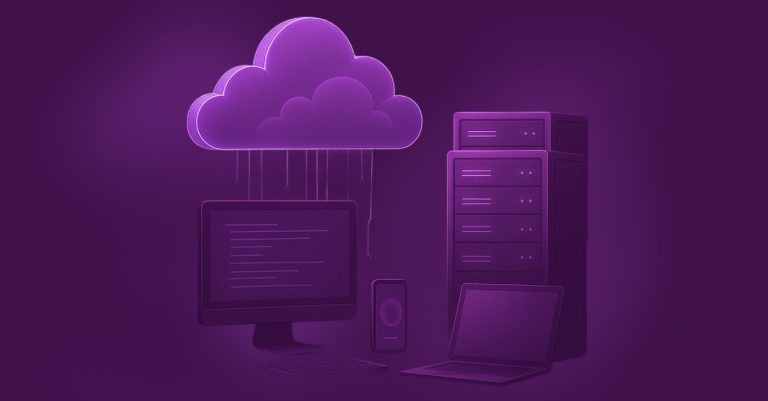


Choosing between cloud and on-premise IT infrastructure is one of the most critical decisions for businesses today.
While cloud computing offers flexibility and cost efficiency, on-premise solutions provide greater control and security. The right choice depends on your business’s needs, compliance requirements, and long-term goals.
This article examines the key differences, benefits, and strategic considerations for making an informed decision in 2025.
| Feature | Cloud Infrastructure | On-Premise Infrastructure |
| Initial Cost | Lower (subscription-based) | Higher (hardware and setup costs) |
| Scalability | On-demand, flexible | Limited and expensive upgrades |
| Security | Managed by cloud providers | Fully controlled in-house |
| Performance | Dependent on speed | Direct network access |
| Maintenance | Managed by service providers | Requires internal IT team |
| Compliance | Provider-dependent | Full regulatory control |
Cloud computing eliminates the need for heavy upfront capital investment in servers and data centers. Businesses pay only for the resources they use, making IT spending more predictable.
Cloud solutions enable remote access, multi-location collaboration, and seamless scalability. As businesses expand, they can easily increase computing power without significant hardware investments.
Reputable cloud providers offer enterprise-grade security, automatic updates, and compliance with international data protection standards, reducing the burden on internal IT teams.
Cloud environments provide automated backups, redundancy, and disaster recovery options, minimizing downtime and data loss risks.
Despite the cloud’s advantages, some businesses still require on-premise infrastructure for:
Many enterprises are adopting a hybrid IT model, combining the strengths of cloud and on-premise infrastructure. This approach enables:
Hybrid strategies are particularly effective for organizations looking to modernize without fully abandoning legacy systems.
✔ Cloud computing is ideal for businesses seeking cost efficiency, scalability, and minimal IT maintenance.
✔ On-premise IT remains essential for organizations with strict compliance needs and high-security requirements.
✔ A hybrid approach provides flexibility while maintaining control over critical workloads.
For businesses evaluating their IT infrastructure strategy, a comprehensive assessment of security, compliance, performance, and costs is essential.
Need guidance on optimizing your IT infrastructure?
VElemento Technologies specializes in designing secure, scalable, and cost-effective IT solutions tailored to business needs.
Contact us to discuss the best approach for your organization.